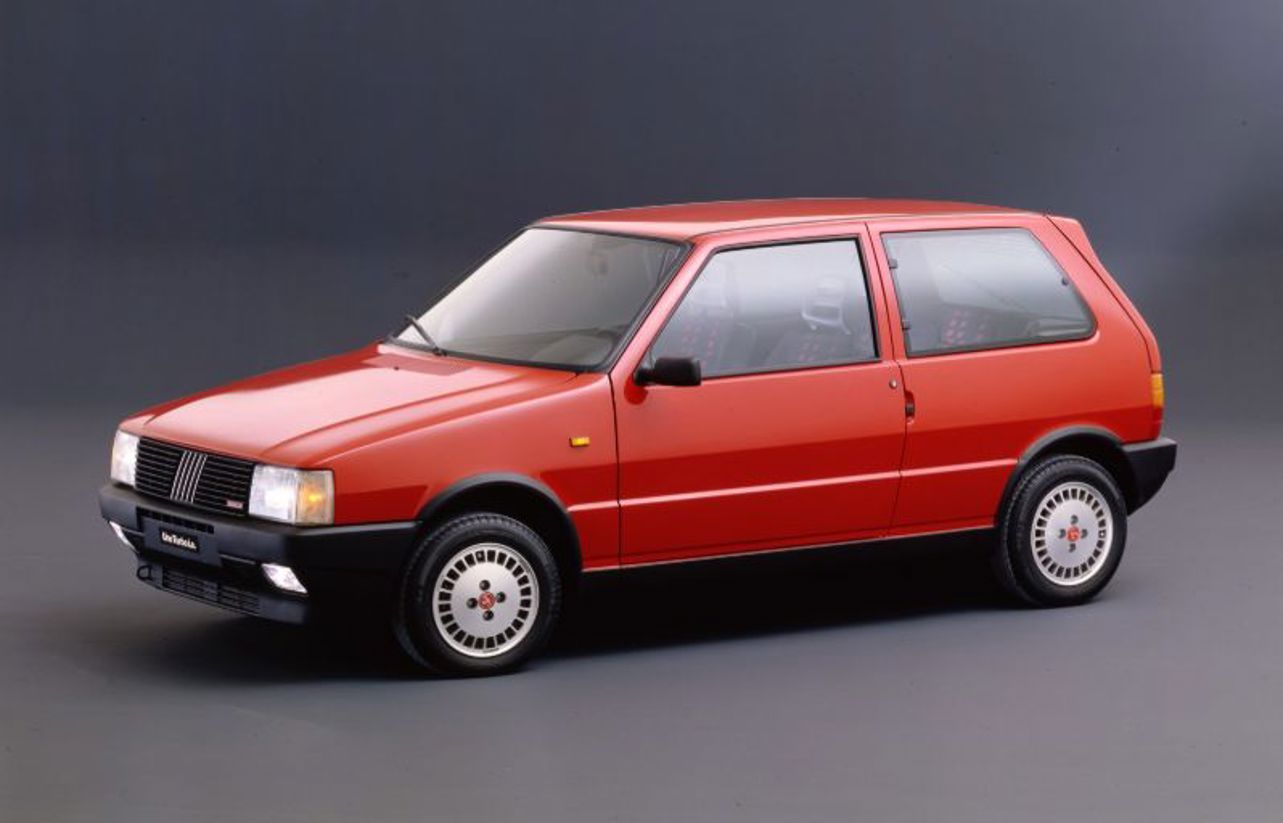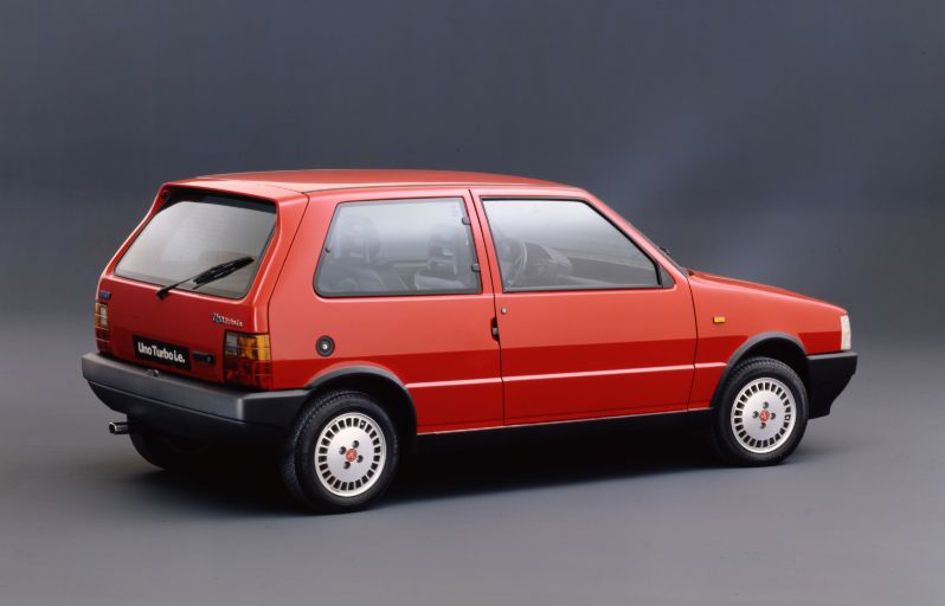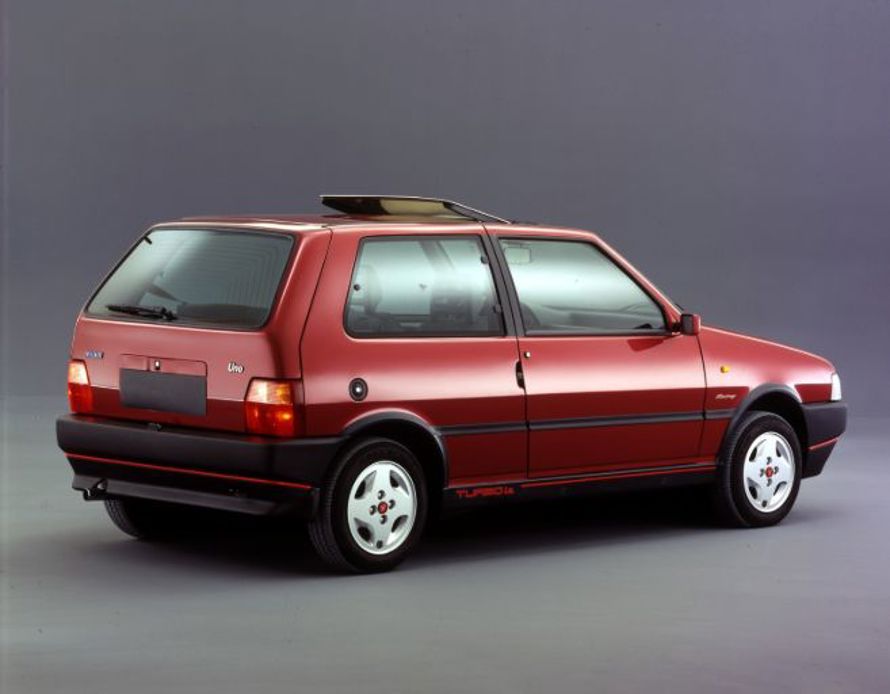Hey kids, once upon a time a turbo-hot-hatch meant massive performance lag, a brief explosion of barely controllable acceleration with torque-steer, and then a lot of anxiety about heat-sink. So now let's meet what Stellantis calls "one of the most surprising and unconventional cars to ever come off the Mirafiori assembly line": the Fiat Uno Turbo i.e., which has just turned 40.

The 1985 Uno Turbo was Fiat's response to the European hot hatch craze, spearheaded by the Volkswagen Golf GTI and Peugeot 205 GTi, but executed in typically Italian fashion: more drama, more mechanical risk (both the VW and Peugeot were naturally aspirated).
"It was a dream within reach and a symbol of freedom for an entire generation whose heart beat to the rhythm of the turbo," says Roberto Giolito, head of Stellantis Heritage. “It had determination, character, and an unmistakable sound which could turn heads."
Officially introduced in the European spring of 1985, when the two-year-old Uno had already sold more than 1 million units, the Turbo i.e. had a 1.3-litre engine featuring Bosch electronic fuel injection, Magneti Marelli electronic ignition, and a water-cooled turbocharger with an air/air intercooler.

This led to an epic 78kW/147Nm, a top speed of 200km/h, and 0-100km/h in 8.3 seconds—all within a body which weighed in at just 845 kg.
The chassis featured an anti-roll bar and a braking system with front ventilated discs. Its five-speed gearbox was derived from the Ritmo 105 TC. The analogue Veglia-Borletti or (by request) Nippon-Seiki completely digital dashboard was a feast for the eyes: a speedometer, rev counter, and gauges for pressure, oil temperature, water temperature, fuel, and, of course, turbo.

Notably, it included the innovative “check panel”, a display which monitored the door, lights, cooling, and lubrification status. It would light up a lot as the years went on.
The body featured a revised front bumper with integrated foglamps and inlets to direct air to the intercooler and oil, miniskirts and wheel arches taken from the Uno SX, and a fibreglass tailgate with a spoiler.

The 13-inch diamond-cut alloy wheels were fitted with 175/60 low-profile tyres and hubcaps with the Abarth scorpion on a red background.
The interiors were a showcase of sporty elegance: black velvet decorated with the five red bars of the Fiat logo, red carpeting, black seatbelts, a four-spoke steering wheel, and a red liquid-crystal clock.
The car got extra cred from a 1985 promo test session organised by Fiat for Michele Alboreto, Ferrari’s official Formula 1 driver at the time, at the Jacarepaguá circuit in Brazil.
“It is fun, responsive, and the turbo gets your heart racing. With a bit more horsepower, it would be perfect for the track,” he said.
In 1986, the first update introduced new colours, a new grille, matching side mirrors, “Turbo i.e.” stripes along the sides, and the debut of the more visible green digital dashboard.
The 1987 restyle—model year 1988—introduced the Antiskid system designed by AP Lockheed, which acted only on the front wheels. Even Stellantis now calls this technology "problematic".
Three years later, the more mature and modern second series made its debut. The engine featured a capacity of 1.4 litres, a new Garett T2 turbine, an increase to 87kW, and acceleration from 0-100km/h in 7.7sec.
Meanwhile, it came with a more understated look: bumpers featuring a red strip, an integrated spoiler, new four-spoke alloy wheels, more ergonomic interiors, seats with black and gray squares, and a leather Momo steering wheel.
There was also an 83kW, catalytic-converter version, as well as the Racing version which sported matching details, a cursive logo, and a load of options: a sunroof, remote-control locking, headlamp washers, electric windows, and metallic paint.
The Uno Turbo i.e. was produced until 1994, passing the baton onto the Punto GT - which was even harder to control.
In its time, over 50,000 were sold. Stellantis Heritage notes "few have survived, especially in their original configuration". Most likely because they either blew up or rusted to pieces. But what an awesome little machine... and an acknowledged classic.










